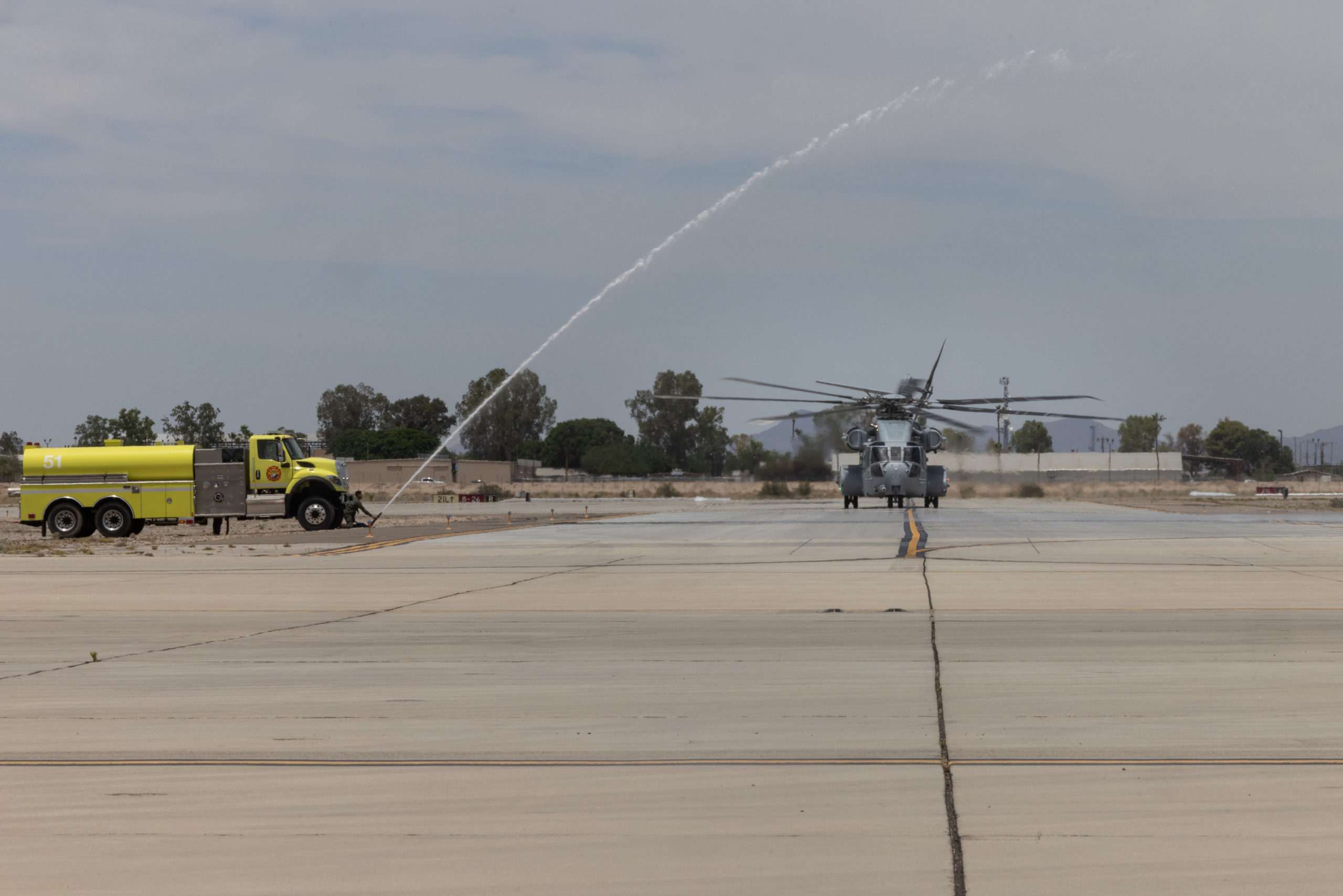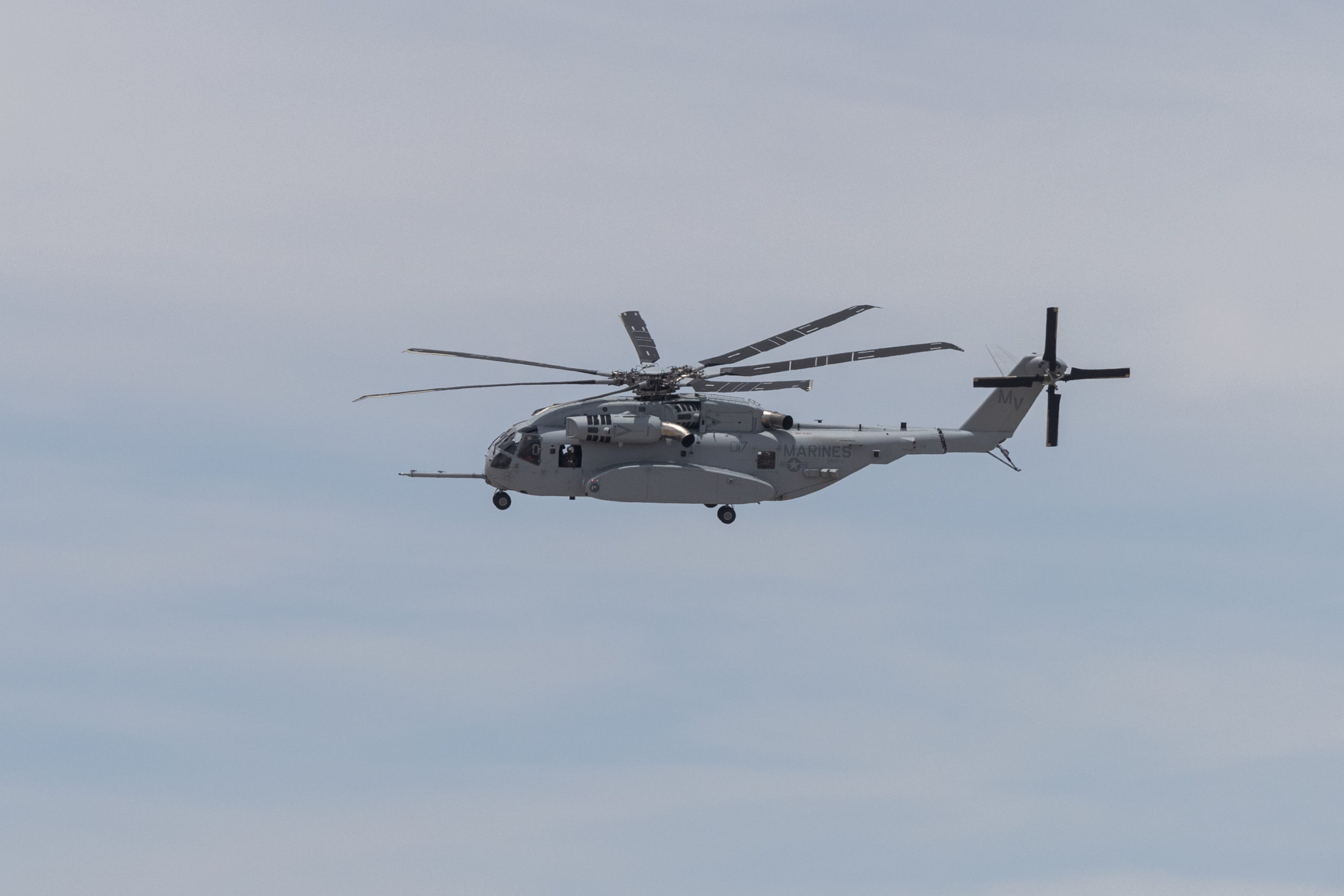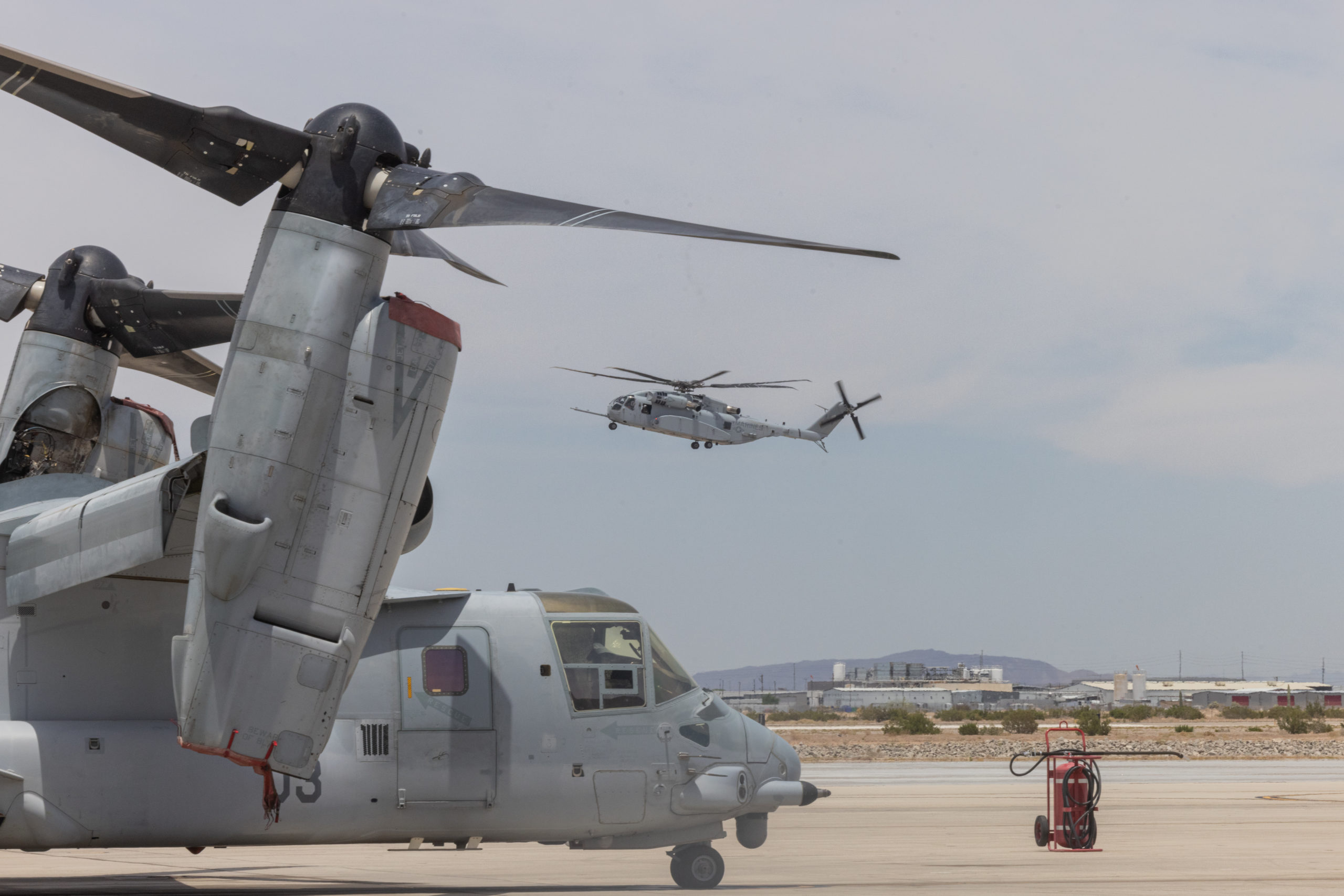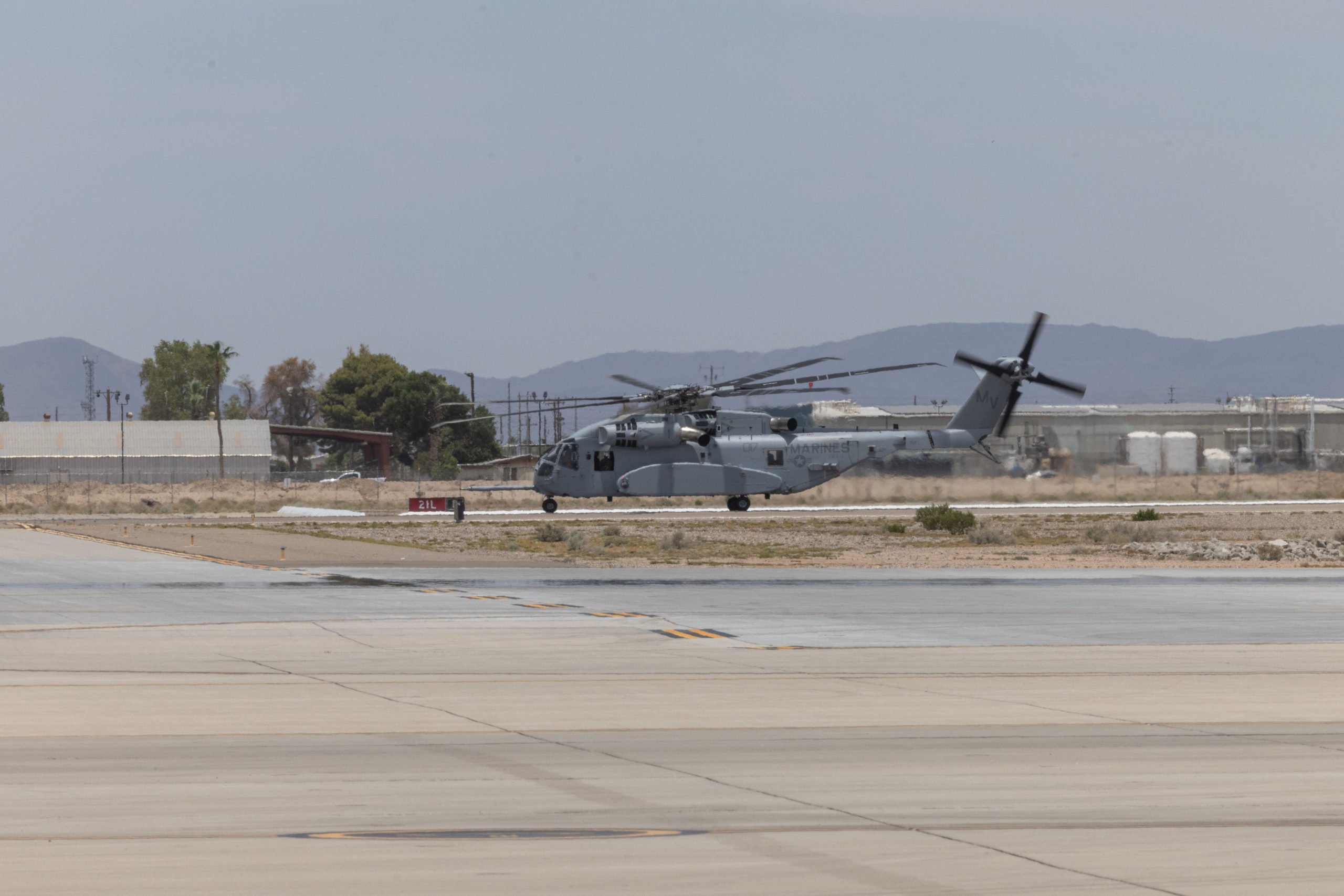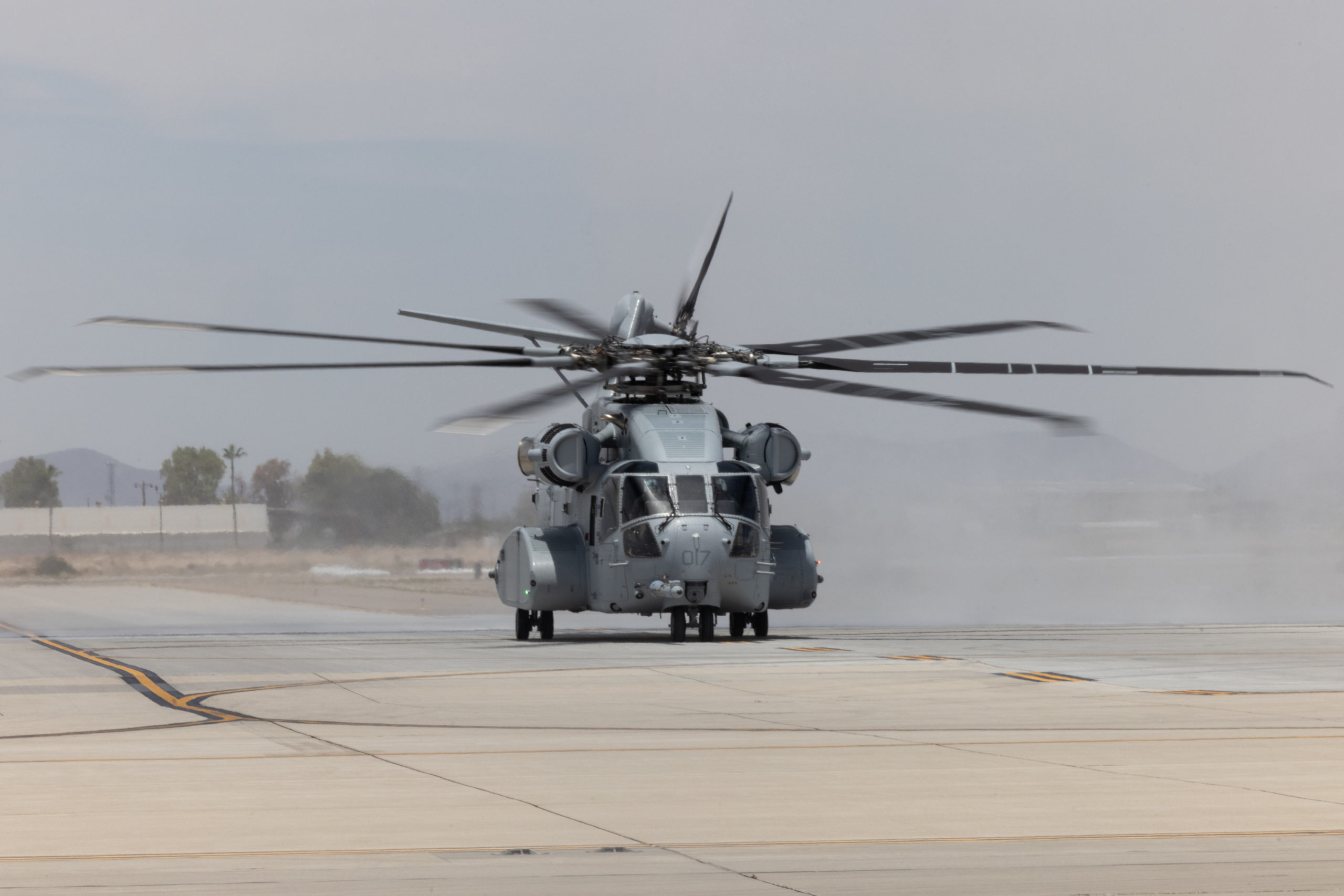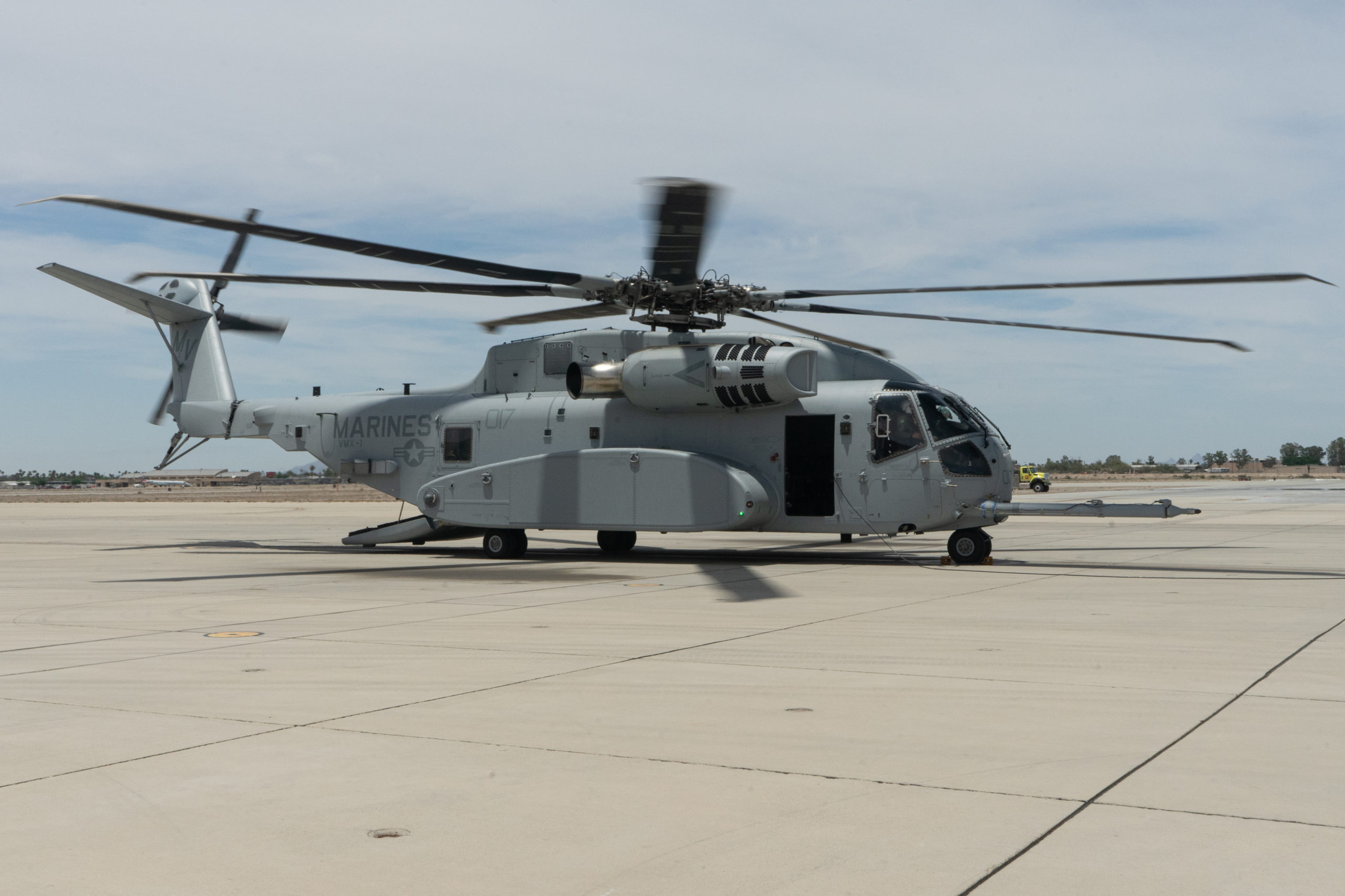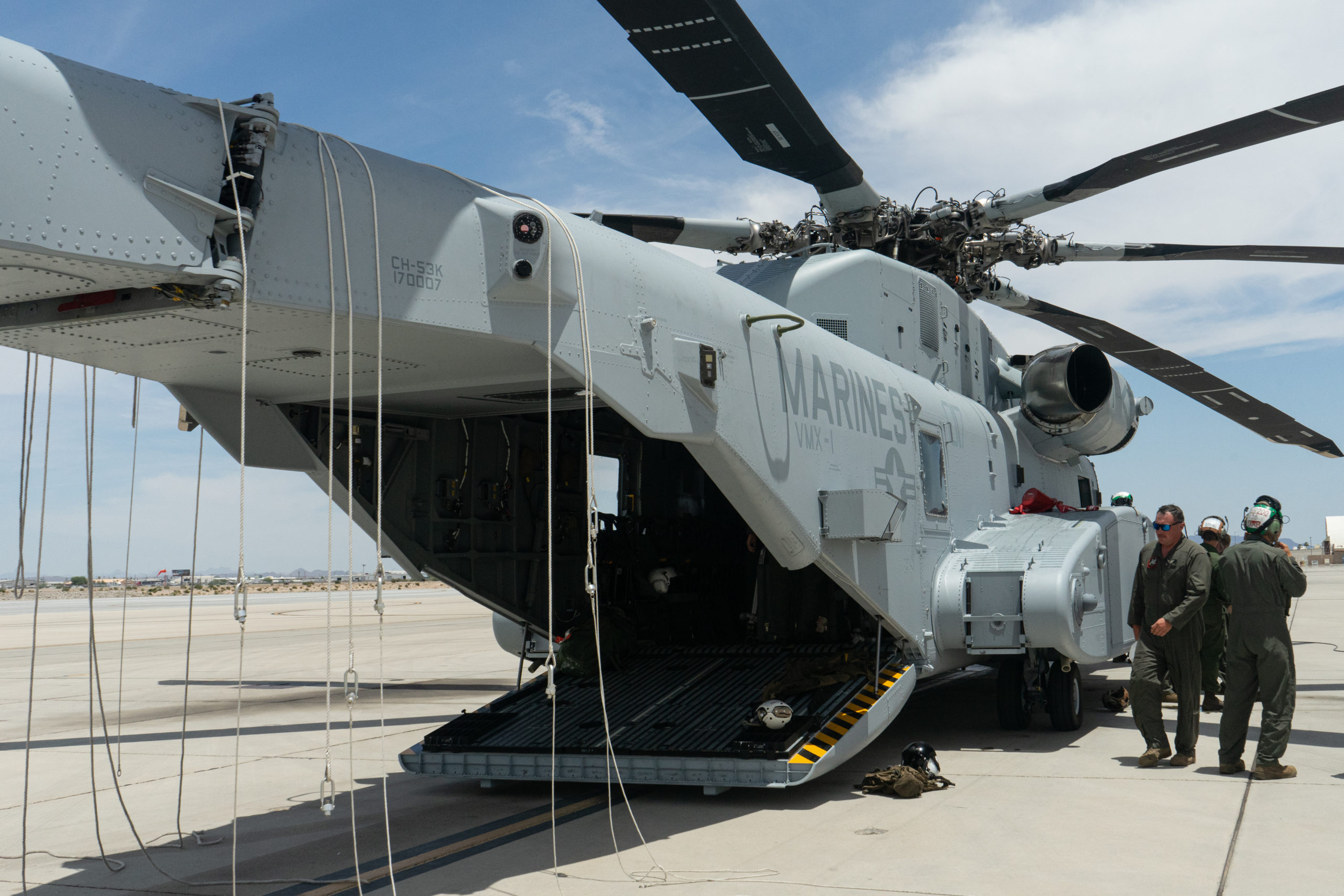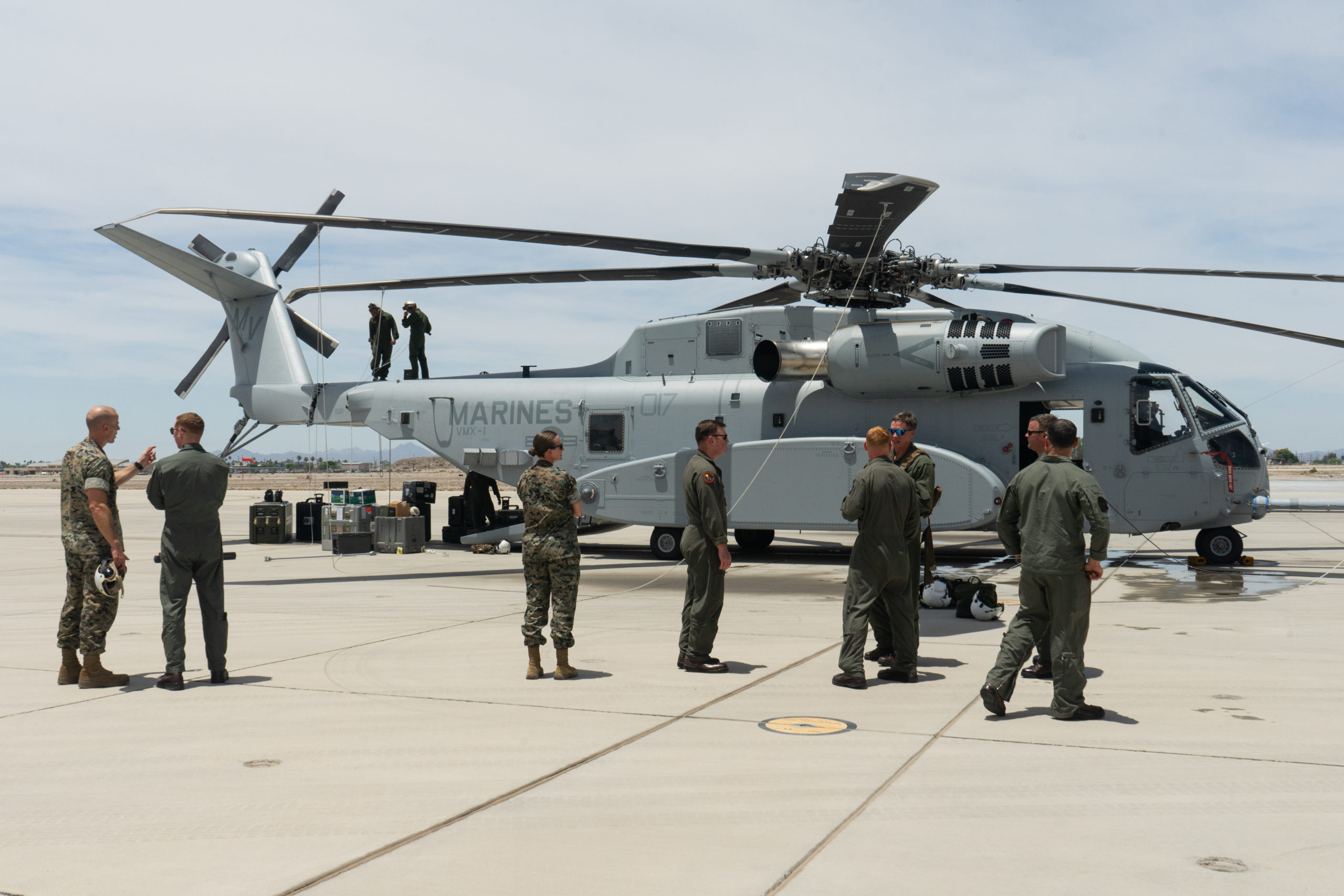By Robbin Laird
On June 7, 2024, the CH-53K moved from the VMX-1 detachment at New River to join the core of the unit which is located at Yuma.
This means that the VMX-1 aircraft is co-located with MAWTS-1 and becomes an integral part of the ongoing transformation of the USMC.
What was VMX-22 and located at New River on the East Coast has became VMX-1 when it moved to Yuma in 2016.
The idea was to co-locate the operational test squadron with MAWTS-1 to enhance the Marine Corps capability to drive innovation associated with its new and evolving air capabilities.
This process of moving from VMX-22 at New River to becoming VMX-1 located at Yuma really was driven by the coming of the F-35.
As I wrote in 2012:
The Marines have stood up their first squadron of F-35 Bs at MCAS Yuma.
But the Marine Corps approach to the aircraft is built on recognition that in addition to its role as a strike aircraft, it has C2 and Information Warfare capabilities, which will make it a central piece to the ACE or Aviation Combat Element of the MAGTF.
To shape the approach, to determine the evolution of the aircraft is firmly rooted in a triangular approach taking shape at Yuma.
Two squadrons will be established and are the operators. MAWTS-1 will develop tactics and training for the F-35 B in conjunction with the other aviation elements for the ACE. And VMX-22 will focus on the technologies and systems of the platforms making up the evolving ACE for the MAGTF.
As Michael Orr, the CO of the squadron underscored, “we are testing all USMC platforms working together in developing Marine aviation capabilities. We are not just testing individual platforms. This is especially crucial when you have dynamic, transformational platforms such as the Osprey and the F-35.”
During a 2018 visit to Yuma, I discussed with VMX-1 their approach to driving the capabilities of the F-35 with the Osprey to enhance MAGTF operations, and that conversation provides a good sense of what the unit does.
The Marines initially worked the IOC support for the F-35, now they are working on leveraging the aircraft in its current configuration for the MAGTF and will spend the next couple of years working with the next iteration of the aircraft, the 3F software configuration and winging out its capabilities, notably for the Ground Combat Element.
The 3F will allow the aircraft to work with externally loaded ordinance for operational situations in which Low Observability is not the primary aspect of what is being required from the aircraft.
And while they are doing that, in the words of Major Wright, there will be a lot of “side projects’ with regard to leveraging the F-35 for the MAGTF as well.
With regard to the Osprey, the air system has evolved from the VMX-22 role of getting the aircraft into the force, to reworking the con-ops of the MAGTF leveraging the aircraft, to modifying aspects of the aircraft and its operations to optimize force insertion, to reshaping the aircraft to become a key part of the digital interoperability effort within the USMC.
Major Duchannes and Maj. Ryan Beni, also an MV-22 operator since 2009, and a Marine I had met earlier during a visit to Marine Corps Air Station New River, noted that the MV-22 has gone through several upgrades over the past few years, including upgraded communication systems and a new defensive weapons system.
“We are now working our way into the whole digital integration realm, so that we can empower the MAGTF more effectively as well as the Joint Force.”
The Osprey pioneered what might be called digitally enabled force insertion with the introduction of the MAGTAB into the squads operating on the Osprey and having the situational awareness to understand what had changed in the objective area during a long flight on Osprey to the objective area as well.
And working that digital interoperability piece is crucial for the F-35 as well as the Marines work the gateways and message systems to get benefit from the F-35 as it operates as a forward combat system enabling MAGTF operations.
This is a work in progress but a central focus for MAWTS-1 and VMX-1.
Now the CH-53K has moved from the East Coast VMX-1 detachment which has played a key role in CH-53K development to Yuma to work closely with MAWTS-1 as well.
And the digital transformation discussed during the 2018 visit to VMX-1 is enhanced by the arrival of the CH-53K which is an advanced digital aircraft in both its operational and sustainable aspects.
As James Deboer has noted in a June 7, 2024 article:
The aircraft left MCAS New River for the cross-country flight piloted by Lt. Col. Adam “Mongo” Horne and Lt. Col. W.Z. “Gypsy” Crittenden. Horne served as the officer in charge of the Heavy Lift detachment at New River and helped the CH-53K reach Initial Operational Capability (IOC). Horne and Crittenden were welcomed onto the flightline at Yuma by Col. Brad “Spicoli” Hipp who serves as the commanding officer of VMX-1. Hipp, who is about to transition to a new assignment in Hawaii, told The War Zone:
“The arrival of the Kilo in Yuma is very important to VMX-1. Having the whole team together under one roof allows us to do the experimentation and demonstration that we want. We can do things individually with our platforms which prove capability and weapons and software, but really the strength of this unit when compared to other Operational Test squadrons, or other squadrons in general, is our ability to integrate. To integrate across all our TMSs, with the most recent additions of platforms with the newest software, the newest weapons and then we can really get after things that our stand-in force is going to need to do in our Expeditionary Advanced Base Operations (EABO) execution. And so that’s kind of where I see the unit. We are on a trajectory now with two new hangers and all the platforms under one roof in Yuma and we’re really going to be able to take it to the next level.”
While Hipp is a fighter pilot by trade with hundreds of hours in the F/A-18 and F-35, he has had the chance to fly the CH-53K. Asked about the experience, he told us, “I cannot be a bigger fan of this airplane. As a guy that has never had any helicopter training, with one simulator ride and competent pilot, they had me landing the airplane and doing landing patterns and making small adjustments in the hover. All of the things that are really challenging to do in a helicopter are easier due to an amazing flight control system. While I never flew the Echo, from what I heard, it’s a bear to fly and you would not dare take your hands off the controls. I remember hovering and struggling a bit and Mongo looked over to me and said, ‘Sir, take your hands off the controls.’ I did and the airplane immediately stabilized. That’s how good this airplane is. The takeaway is that in our Echo you had to really focus on flying and not as much focusing on the mission and tactics. The Kilo allows the pilots to focus more on the mission.”
The CH-53K is no stranger to MAWTS-1 and has been involved in recent WTI events, which I have written about over the past two years. In fact, the CO of the squadron for past two years has been a CH-53E operator and he has played a key role in working with the CH-53Ks which have come to the WTIs.
But now being located in the Yuma VMX-1 squadron will enhance the CH-53K engagement in MAWTS-1.
The day before the change of command ceremony, the CO of the squadron, Col Eric Purcell took his last last flight as squadron commander.
Here is my photo of his landing:
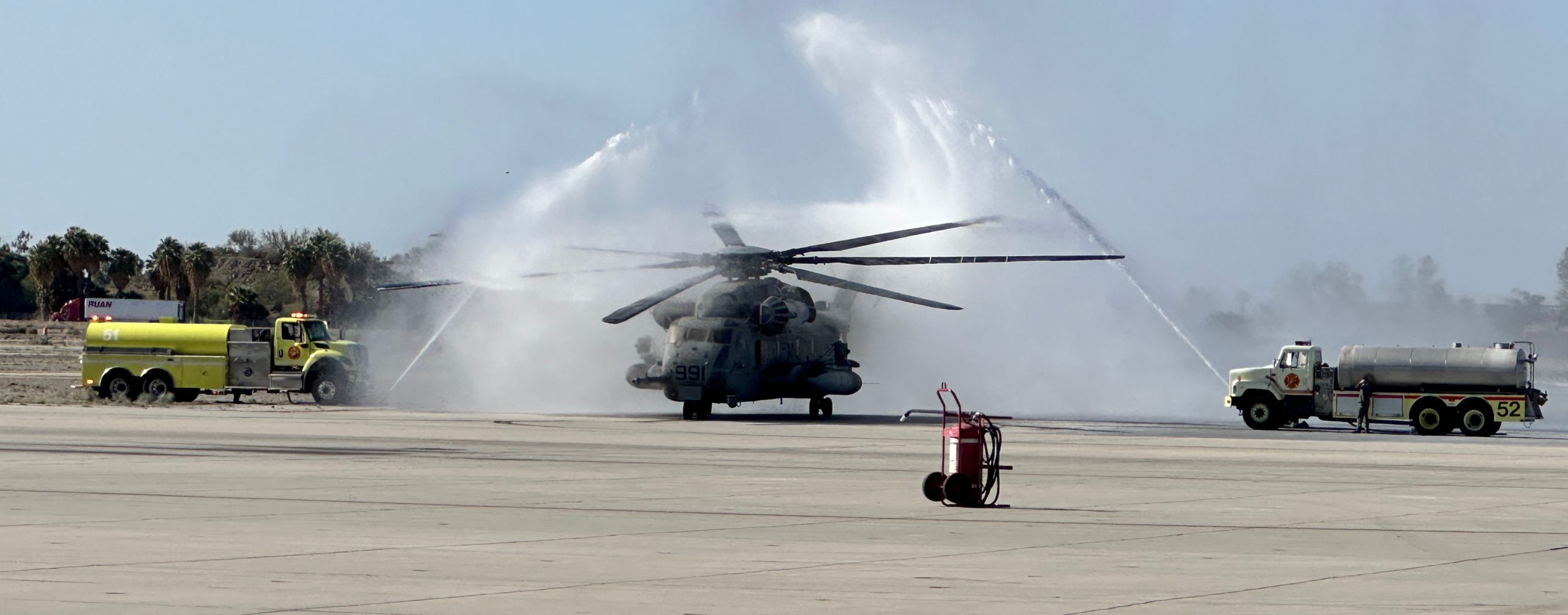
In the video below the arrival of the CH-53K to VMX-1 receives a similar welcome.
The future is now.
Credit video: Marine Operational Test and Evaluation Squadron (VMX) 1 receives a CH-53K King Stallion at Marine Corps Air Station (MCAS) Yuma, Arizona, June 7, 2024. VMX-1 received this CH-53 from their detachment at MCAS New River, North Carolina, this will allow the unit to further enhance their weapon and aviation capabilities in order to complete VMX-1’s mission of being the Marine Corps’ test and evaluation squadron. (U.S. Marine Corps video by Lance Cpl. Christian Raodsti)
YUMA, ARIZONA,
06.07.2024
Video by Lance Cpl. Christian Radosti
Marine Corps Air Station Yuma
I recently published a book with Ed Timperlake on MAWTS-1 and its key role in USMC transformation.
And last year I published my book on the coming of the CH-53K:


